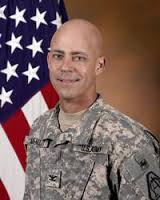
DISA helping military services cut duplication in enterprise resource planning systems
At least some of DoD's enterprise resource planning costs have been driven by duplicative hardware and other infrastructure investments, and the Defense Information...
The Defense Department and its military services spend several billion dollars each year to build and maintain massive enterprise resource planning (ERP) systems dealing with everything from logistics to human resources and finance. Some of that spending over the years has been, shall we say, unproductive.
At least some of the department’s ERP costs have been driven by duplicative hardware and other infrastructure investments, and the Defense Information Systems Agency thinks it can help. It’s building an ERP “center of excellence” to advise the military services on how to share computing resources between the massive systems — a task that makes sense for the agency, given that the Army and Air Force have already made the decision to transition several of their large programs to DISA’s data centers and stop hosting them separately.
The center will be staffed by a dedicated team of engineers and experts in back-end business processes, said Alfred Rivera, the director of DISA’s business and development center. It’s already working with the management teams of four Army ERPs and one from the Air Force.
“We see a big opportunity for the services to get some savings and build an ecosystem for ERPs,” Rivera told a recent breakfast gathering organized by AFCEA DC. “The way we would have traditionally dealt with the Army ERPs was to bring them into our data centers one at a time. What we now understand is that it doesn’t make any sense to transplant four stovepiped, independent systems into DISA when we can take advantage of a common architecture and create efficiencies.”
In an interview, Rivera said it’s critical that DISA understand the business processes that drive those systems before it starts making technical decisions, hence the new center of excellence. He said the agency won’t try to change the workflows in any military service surrounding any individual ERP, but it needs to at least be familiar with them and have the ability to offer advice on how to streamline things.
“Our mission partners are asking for help in how to use standardized infrastructure as a service capabilities, but each of these big, back-end business systems have been coming to us independently,” he said. “The CoE needs to be able to work with all of them to see how they can work together and find synergy so that we’re not using separate infrastructure for every single functional area that’s coming out. We’re not going the build the business processes, but we’re going to encourage them to work together.”
The current plan is to move the Army’s ERPs into shared Oracle “SuperClusters” housed within DISA’s computing centers, Col. Darby McNulty, the project manager for Integrated Pay and Personnel System-Army, one of the systems due to migrate within the next several years said in an interview.
“The environment we all want to get to is where we have common hardware and common software and where our data’s better federated,” McNulty said. “DoD has hosted a couple day-long sessions where they’ve brought in all of the senior program management for all of the larger programs across the services to collaborate and share information, and so far I think it’s a good news story. It’s helpful to be able to share what’s working well and what’s not with each other’s products. The idea of a center of excellence only started a couple years ago, and it’s starting to take legs. That collaboration is essential.”
Copyright © 2025 Federal News Network. All rights reserved. This website is not intended for users located within the European Economic Area.
Jared Serbu is deputy editor of Federal News Network and reports on the Defense Department’s contracting, legislative, workforce and IT issues.
Follow @jserbuWFED




